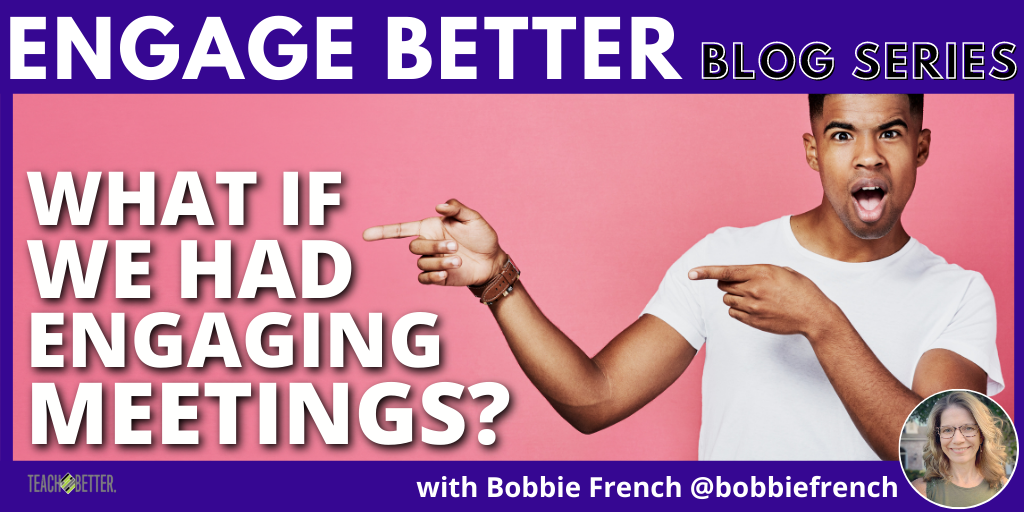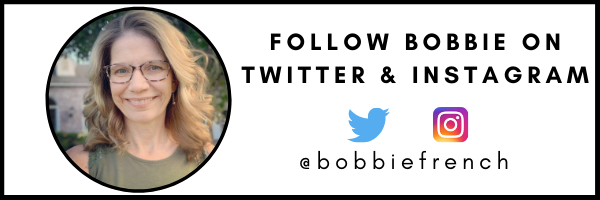TL;DR:
- It’s important to prioritize our time with staff during meetings to connect, grow, discuss important issues, and allow for collaborative decision-making.
- Be intentional with how you structure meetings. Flip the staff meeting and share information ahead of time via email, Flipgrid, Smore Newsletters, Padlet, or a Google Document with hyperlinks.
- Offer an opportunity for teacher voice through the Amplify-Sunset-Create activity or Game of 35 activity (to build consensus).
We’ve all seen the memes “I survived another staff meeting that could have been an email.” What if… staff meetings could engage and inspire?
In this blog post, I will share a few strategies and ideas to make your staff meeting more engaging and collaborative. Let’s get staff excited to come together for a ‘meeting’!
Staff meetings have become synonymous with minutiae and housekeeping items. We have such limited time together as staff that we need to maximize that time. Think about the saying “quality over quantity” as you reimagine the time you have with your staff.
Prioritize this time to connect, grow together, discuss important issues, and allow staff the opportunity to contribute to collaborative decision-making.
What if…we had engaging meetings?
At a recent keynote, the presenter made a comment about how staff meetings need to be more than just hearing ONE voice and that if you’re hearing just one voice at that meeting, it probably should have been an email. You could actually hear the round of applause from teachers when she said it. The same teachers have probably shared the ‘should have been an email’ memes on social media.
Teachers are tired. They are definitely tired of sitting through meetings where information is shared and they don’t have the opportunity to participate, collaborate, or share opinions. Many of us are fortunate to be able to have our staff together again and make a transition from Zoom meetings to more in-person meetings. We have the opportunity to embrace being TOGETHER and engage our staff in planning what our school will look like in the ‘new’ normal.
Prioritize staff meeting time to connect, grow together, discuss important issues, and allow staff the opportunity to contribute to collaborative decision making. Click To TweetWhat if…we make it an email or newsletter?
I’m concerned that as schools are back in person with fewer mitigating factors, we will go back to the way things were. We’ve all learned new ways to do school, teach, collaborate and harness technology to make learning a more effective and engaging process. We need to capitalize on our new knowledge.
Principals and other leaders usually have very good intentions when they are planning meetings. They know this time is valuable and want to make the most of it. Principals are also tasked with finding ways to share information with teachers and staff.
This is an opportunity to use some of the technology tools we’ve learned over the past two years. Flip your staff meeting and send out information ahead of time via Flipgrid, Smore Newsletters, Padlet, or a simple Google document complete with hyperlinks. Save the last few minutes of your staff meeting time to answer any questions staff may have about the information you sent out.
Engaging Meetings: What if…we provide opportunity for teacher voice?
Teacher VOICE is often missing from our meetings when we are focused on all of the have to’s and information sharing. Our teachers and staff work with students and in our systems on a daily basis. They have a lot to say about what works and doesn’t work. We need to tap into the beliefs, opinions, and perspectives of our staff. Engaging staff meetings is one way to invite them to be part of the processes that lead to school improvement.
A simple way to get teacher input at the beginning of the year or when focusing on a program, curriculum, or practice evaluation, is through an activity called: Amplify-Sunset-Create.
You can do this as a group or break up into smaller groups depending on the size of your staff. If you break up into smaller groups, this may facilitate deeper conversations that can be shared with the whole group. The groups think about the topic and debate what things they would want to Amplify, Sunset, or Create.
Amplify: These are the items that we think are working really well and we want to make sure that we continue to implement them or even take them to the next level.
Sunset: What are the things you want to get rid of? The things that are no longer working. We have a habit in education of piling more and more things on teachers’ plates and we never take anything off. This is the perfect way to ask teachers what are some of the things that are not effective and we should stop doing.
Create: Where do your new ideas come from at school? Do you actively ask teachers what programs, procedures, or events they would like to see added at your school? This is where some of the best ideas come from.
Engaging Meetings: GAME of 35
Another activity I like to do with staff to provide opportunities to express themselves and contribute to the goals of the school is the Game of 35. The Game of 35 provides an opportunity for staff to prioritize and build consensus. It is also an easy, equitable, and efficient way to set your priorities for change. I’ve used this activity a few times with great success. Most recently we used it to narrow down our team’s WIGs (Wicked Important Goals) for the school year.
You will want to provide your staff with a prompt to respond to. For example: “Thinking about _____, what is one thing you would want to change this year?” or “What is one area you would like to see our team prioritize this year?”
- Start with a blank index card for each person. They write their response to the prompt on the front of the card. They do NOT put their name on the card as we want this to be an anonymous process.
- Have each person draw five circles in a row on the back of the card with a square below all of the circles, large enough to write a number in it.
- This is the fun part! Think musical chairs! Play music and have staff walk around and swap cards. I have them swap cards repeatedly until the music stops.
- Have everyone find a partner.
- The partners compare the two ideas on the cards. Then award each idea points up to a combined total of 7 (7-0, 6-1, 5-2, 4-3 etc.) The partners need to agree on the points awarded. No partial points—only whole numbers! Write the points in the first circle on the back.
- Play music and switch cards again. Choose a new partner. Repeat for five rounds.
- After the last round, each person totals the number of points in the circles and writes it in the square. I started by asking if anyone had an idea with 35 points? 34 points? etc. The ideas with the highest points become your collective priority.
This is one of my favorite activities because the Game of 35 ensures everyone has an equal voice. It eliminates only hearing the loudest voices. This simple protocol/game allows you to quickly take a lot of ideas and prioritize them based on all of the various voices in the room. It is simple and efficient and the more you use it, the results will come quicker each time. A protocol that builds consensus through collaboration, discussion, and reflection should be in the toolbox of all principals! Protocols offer structured processes to support focused and productive conversations, build collective understandings, and drive school improvement.
[scroll down to keep reading]
What if…we structured our meetings?
In addition to using an activity, protocol, or game like the ones I’ve shared, it’s also vital to remember the structure of your meetings.
- Be clear about your purpose
- Set ground rules or touchstones
- Establish clear and equitable procedures
- Use protocols that ensure all voices are heard
- Opportunities for staff shout outs and celebrations
- Have a ritual/routine to open and close your meeting
Shane Safir shares in the Listening Leader, “Meetings are the building blocks of a listening culture. Without thoughtful routines, a meeting is just an empty vessel – a place where staff gather without much meaning or purpose. If we structure our meetings around powerful routines, however, we have the potential to change the conversation among our colleagues and interrupt the status quo.”
Planning for our meetings shouldn’t be left to the last minute. We need to put in the effort we want to see our teachers put into their classroom lesson planning. We want our meetings to be a learning experience and move our work forward. Structuring your meetings will make them more sustainable and easier to plan for meaningful interactions that will support your school improvement goals.
What if…chocolate?
I couldn’t write a blog post about engaging staff meetings and not mention the importance of chocolate! Or your treat of choice. We know that chocolate can boost our mood so why not use it to boost your next meeting that couldn’t be an email?!
I would love to hear your ideas on how you’re going to make your staff meetings more engaging!
About Bobbie French
Bobbie French is an educational leader, presenter and writer from Massachusetts.
Bobbie has been an educator for over 24 years. She has been an elementary guidance counselor, classroom teacher, special education coordinator, Title I Director, Preschool Director and Administrator.
Bobbie is passionate about focusing on the whole child and creating an environment where all students have a sense of belonging. She appreciates and recognizes the hard work of teachers, and is committed to supporting others to be their best for kids every day. Her passion and enthusiasm for creating a positive and engaging school culture is contagious.
Bobbie is also an avid photographer and loves to tell her school’s story.





